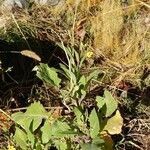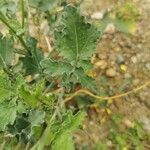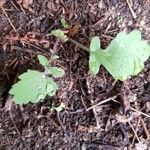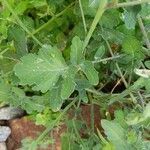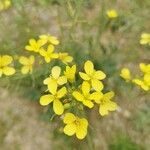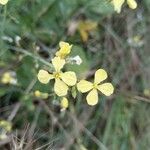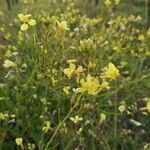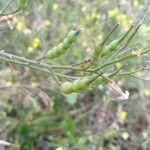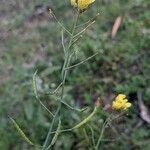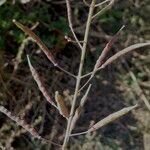Biennial to perennial with lax rosette. Stems erect, glabrous or sparsely hairy below, to 1 m tall; older stems woody. Lvs glaucous, glabrous or sparsely bristly, petiolate. Rosette and lower stem lvs lyrate-pinnatifid to lyrate-pinnate, (4)-8-20 × (2)-3-8 cm; margins crenate to dentate; terminal lobe large, often 3-lobed; lateral lobes subacute or obtuse, in 2-4 pairs, the proximal deflexed. Stem lvs becoming simple, linear, entire, c. 30 × 2 mm. Racemes 12-35 cm long; open fls slightly overtopping buds. Sepals narrow-oblong, 4-5 × c. 1 mm. Petals yellow, 7-9 × 4-5 mm. Lateral stamens spreading. Silique terete, glabrous, linear-oblong, constricted between seeds, (15)-20-35 × 2-3 mm; gynophore 1-2 mm long; valves with prominent median and 4 weaker lateral veins; beak conic, 0-2-seeded, 3-5 mm long. Seeds red-brown, c. 1 mm diam.
Biennial or perennial, more or less woody at base, usually glabrous, often glaucescent, erect, to 50 cm tall. Basal leaves petiolate, lyrate-pinnatifid, the terminal segment large; lobes rounded or obtuse, of 2–3 pairs, sparsely hispid; upper leaves petiolate or narrowed to base, diminishing, the uppermost linear and more or less entire. Inflorescence elongating from concave corymb. Sepals 4–5 mm long, sub-erect. Petals 9–10 mm long, pale yellow fading to white. Ovary on gynophore 1–3 mm long. Siliqua 1.5–4 cm long, 1.5–2 mm wide; valves somewhat constricted between seeds, the midrib not prominent; beak with 0–2 seeds, 2–7 mm long. Seeds 1 mm wide, red-brown.
A cabbage family herb. It is a medium sized erect herb. It grows 50 cm high. It can grow each year from seed or keep growing from year to year. It can become woody at the base. The leaves are lyre shaped or can have lobes. The flowers are yellow and 8-12 mm long. It is like Indian mustard but the seed pod has a short blunt beak. It is constricted along its length. It encloses 1 or 2 seeds.
